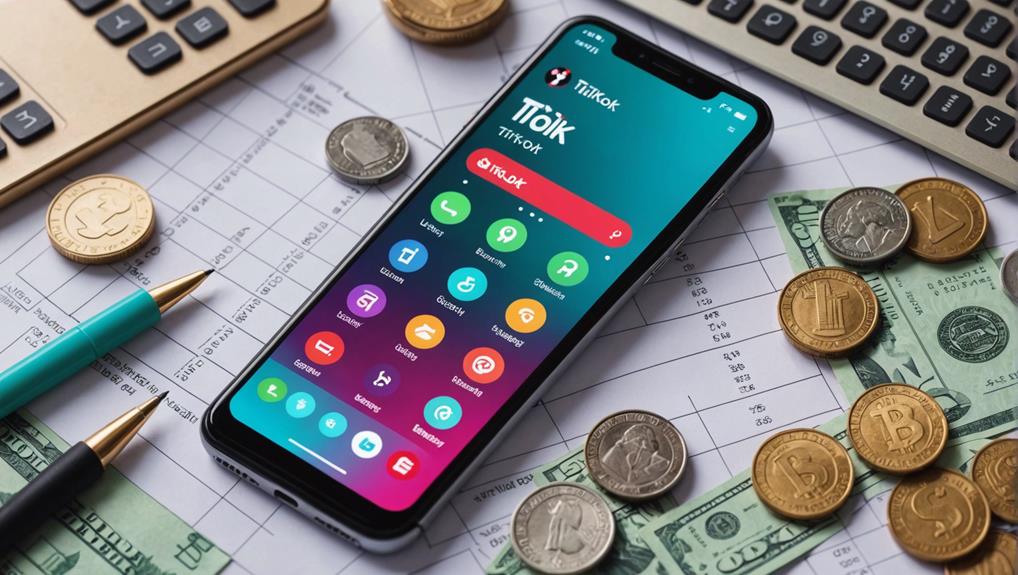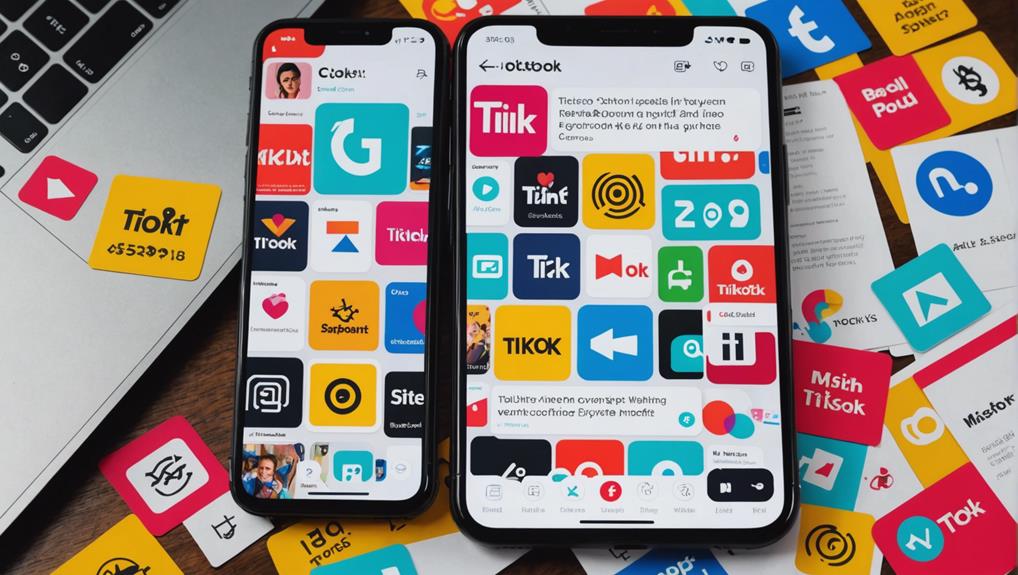Retailers can tailor TikTok shoppable ads by first personalizing content using TikTok’s analytics tools to track engagement metrics and align ads with audience interests for better conversions. Additionally, leveraging user-generated content is vital as 79% of consumers are influenced by authentic customer experiences, boosting trust and engagement. Finally, optimizing the mobile shopping experience is essential; with over 54% of peak sales events occurring on mobile devices, seamless integration of TikTok Shop and swift checkout processes are imperative. These strategies can greatly enhance ad effectiveness, and there’s more to explore for refining this approach.
Key Takeaways
- Utilize TikTok analytics tools to understand audience preferences and optimize ad targeting.
- Align ads with trending topics and formats by leveraging TikTok’s algorithm insights.
- Incorporate user-generated content to build trust and authenticity with the audience.
- Conduct A/B testing to refine ad messaging and visuals for better engagement.
- Ensure a seamless mobile shopping experience to capitalize on high mobile usage rates.
Personalize Content With Analytics
In the evolving landscape of digital marketing, leveraging TikTok’s analytics tools has become vital for retailers aiming to personalize their shoppable ads effectively. By meticulously tracking engagement rates, click-through rates, and conversion rates, retailers can discern which content resonates most with their audience. This data-driven approach enables brands to craft personalized shoppable ads that align with user demographics and interests, thereby enhancing conversion likelihood.
Understanding the intricacies of TikTok’s algorithm is fundamental for tailoring content strategy. Retailers can guarantee their ads reflect trending topics and formats that captivate their audience. By analyzing user demographics, brands can refine their targeting, guaranteeing that ads are not only relevant but also engaging.
A/B testing plays an important role in optimizing ad performance. Retailers can experiment with different ad variations to determine the most effective messaging and visuals. This iterative process, informed by analytics tools, leads to more personalized content.
Moreover, implementing UTM parameters allows retailers to pinpoint the effectiveness of various traffic sources. This insight is essential for adjusting shoppable ad strategies to better meet audience expectations, ultimately driving higher engagement rates and conversion rates.
Leverage User-Generated Content
As the digital marketing sphere continues to evolve, leveraging user-generated content (UGC) on TikTok emerges as a formidable strategy for retailers aiming to enhance the authenticity and impact of their shoppable ads.
With 79% of consumers indicating that UGC considerably influences their purchasing decisions, integrating this content can transform a brand’s presence on TikTok. By harnessing the power of real customer experiences, brands can create a more authentic connection with their audience.
- Boost Authenticity and Trust: Showcasing UGC fosters relatability, with 79% of TikTok users expressing greater trust in brands that feature actual customers using their products. This authenticity drives engagement and builds customer loyalty.
- Enhance Engagement: TikTok users spend an average of 52 minutes daily on the app. By incorporating high-quality visuals and relatable product recommendations, brands can capture user attention and increase engagement.
- Foster Community and Visibility: UGC encourages community participation, prompting viewers to share their own experiences. This organic reach is powerful, as 78% of TikTok users have purchased products after seeing them in UGC.
Optimize Mobile Shopping Experience
With over 54% of Black Friday and Cyber Monday sales transpiring on mobile devices, the necessity for retailers to enhance the mobile shopping experience on TikTok is crystal clear.
As social commerce continues to evolve, ensuring a seamless integration of TikTok Shop offers into mobile platforms is essential. Fast mobile checkout processes are vital; delays can result in increased cart abandonment rates, impacting overall sales performance negatively. Consequently, retailers must prioritize user-friendly interfaces that provide clear navigation to enhance the customer journey.
Engaging videos tailored for mobile viewing are fundamental in capturing user interest and boosting click-through rates. These high-quality visuals not only enhance product appeal but also encourage impulse purchases directly through the TikTok app.
For maximum impact, TikTok-related promotions should be prominently displayed on mobile sites, catering to users who are accustomed to quick and seamless shopping experiences.
Moreover, a well-enhanced mobile shopping experience can greatly reduce bounce rates and extend user engagement with content, fostering a more interactive and satisfying shopping environment.
As the trend towards mobile commerce accelerates, retailers need to focus on these strategic elements to remain competitive and effectively reach their target audience.
Frequently Asked Questions
How Can Retailers Identify Their Target Audience on Tiktok?
Retailers can identify their target audience on TikTok through demographic analysis, examining user behavior, content preferences, age groups, and geographic location. Analyzing interest categories, engagement patterns, influencer reach, seasonal trends, and advertising effectiveness further refines audience targeting.
What Metrics Should Retailers Track for Tiktok Ad Performance?
Retailers should track metrics such as click-through rates, conversion metrics, engagement levels, audience demographics, ad reach, video completions, and return on ad spend. Additionally, brand awareness, customer feedback, and A/B testing are essential for refining TikTok ad strategies.
How Do Tiktok Algorithms Affect Ad Visibility?
TikTok algorithms greatly influence ad visibility by prioritizing ad placement based on audience engagement, content relevance, and user interactions. Factors such as algorithm changes, video length, hashtag strategy, seasonal trends, brand authenticity, and creative formats further shape this process.
What Are Best Practices for Engaging Tiktok Influencers?
Best practices for engaging TikTok influencers involve influencer partnerships emphasizing creative collaborations and authenticity. Prioritize audience engagement through content strategy, ensuring brand alignment. Focus on trend adaptation, niche targeting, performance incentives, and campaign longevity to maximize impact and reach.
How Can Retailers Ensure Ads Align With Tiktok Trends?
Retailers can guarantee ad alignment with TikTok trends by employing trend analysis, leveraging user-generated content and hashtag optimization, and focusing on storytelling techniques. Prioritizing visual aesthetics and seasonal themes enhances audience engagement through creative strategies and participation in viral challenges.
Conclusion
The integration of TikTok shoppable ads into retail strategies presents a promising avenue for enhancing consumer engagement and driving sales. By personalizing content through analytics, retailers can effectively target audiences with precision. Leveraging user-generated content further amplifies brand authenticity and social proof, fostering deeper connections with consumers. Additionally, optimizing the mobile shopping experience guarantees seamless and efficient transactions, catering to the growing trend of mobile commerce. These strategies collectively position retailers to capitalize on evolving digital shopping behaviors.




